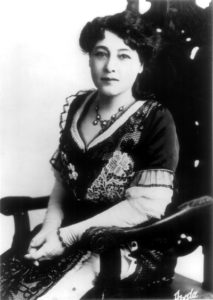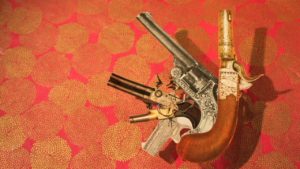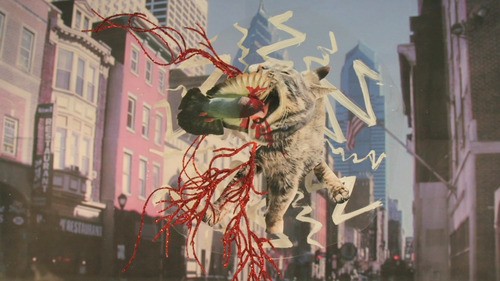In an era where digital compositing and software tweening are largely unquestioned aspects of the average animation workflow, where overseas outsourcing is commonplace and mainstream American animation is mostly a corporate-funded, committee-created consumer product, Kelly Gallagher’s brand of DIY, handmade cinema is inherently radical.
Gallagher ignores distinctions between art and craft, documentary and essay film, while incorporating found footage, archival audio, and original interviews with rotoscoping, cut-outs, and paper collage derived from cultural detritus of mysterious origin. From 2014’s anti- police-brutality anthem, “Pen Up The Pigs”, to her current work-in-progress, the immigration activist-focused “Relentless Resistance: Sindy’s Story,” she continues to reclaim and amplify lost histories through combined acts of political and visual rebellion.
Thanks to Kelly for her thoughtful answers and for allowing us to reprint this interview, which I originally posted on Medium exactly two years ago today.
How important — if at all — is it to you to be identified as a ‘woman filmmaker’?

KG: I use film to call attention to things — as loudly and explicitly and colorfully as possible. Since the beginning of film, going all the way back to Alice Guy-Blaché, women filmmakers and their massive contributions have continually been underrepresented and erased from the canon. For me, an imperative part of my practice is calling attention to the need to make explicit these unjust imbalances of representation. Part of that process is admitting the problem exists and then working to change things. So, as part of my curatorial practice for example, I definitely embrace the practice of explicitly noting when a program is celebrating women filmmakers.
One of the film programs I curate, that’s also expanded into a zine-in-progress that I’m working on with friend and filmmaker Charlotte Taylor, is called “The Heroines of Handcrafted Cinema.” We recognize the lack of attention, both historically and presently, given to women working in experimental handcrafted film. So we explicitly draw this issue out into the light and celebrate these heroines of handcrafted cinema. I think in a conservative city, it can be even more crucial to call explicit attention to these issues in ways like this, because then you will get the most engaged and genuinely earnest and excited audiences possible — folks who recognize these issues and want to take part in the celebration of underrepresented filmmakers.
What was the genesis of the Women With Knives tour?

KG: I became friends with animator/filmmaker Charlotte Taylor after beginning grad school at the University of Iowa. She was an alumna of my program and people here told me I absolutely needed to know her and see her work. I was in such awe of her handmade stereoscopic film once I saw it. During one of her trips through Iowa City, we talked about wanting to tour. She was also in talks with Lauren Cook, another experimental filmmaker from our program, about hitting the road. And so was born: the Women with Knives Animation Film Tour. Charlotte, Lauren, and I organized the tour along the East Coast. It was so amazing to be able to share my films at diverse venues with engaged audiences, as we traveled along the coast, gesturing towards the history of mobile cinemas, alternative distribution, and contextualizing ourselves within a history and solidarity with women experimental filmmakers who have incessantly toured with their work, demanding the need for alternative modes of sharing cinema experiences.
You directed the music video for The Coup’s “Long Island Iced Tea, Neat” How did you get that gig? What was it like working with them?
KG: I have been a fan of The Coup for a while now- a fan of their music and of their politics. Boots Riley and I have some mutual friends through political organizing work. I think I shared some animation of mine with him at one point- an early clip from “Pen Up the Pigs.” To my excitement he was really feeling it and the next thing you know, I’m making a music video for The Coup! Boots was awesome and really gave me freedom with the video. I shared some initial thoughts with him and he just let me go for it.
What does your basic animation setup look like? How might a reader embarking on their own DIY media production adventure recreate it at home?
KG: I love discussing animation set-ups because I think it’s so important for everyone to realize that they too can animate at home, with relatively little set-up work. Sometimes I animate horizontally and sometimes I animate my cutouts vertically- but basically I just have these 2 plastic panes on which I place my cutouts. I just went to Home Depot once and bought these two plastic panes and had each one kind of nailed into a wooden base so that each could stand up-right. This allows me to create depth and distance between background and foreground when I’m animating. A lot of professional animation tables work the exact same way. Animating cutouts is really fun and even without my setup, one could easily make a background (from either paint, or collage, printed out photographs, or textured paper from the local craft store). And then cut out some images or get some 3D objects to move in front of the background and simply photograph as you go along. I’ve even seen some really cool animations made from tools that are becoming increasingly accessible like camera phones.

Outside of “Pen Up The Pigs,’’ are you aware of any instance in cinematic history in which glitter glue has stood in for blood?
KG: This is an amazing question. Maybe one of my favorites ever. I actually can’t say that I know of anyone who has ever used glitter as blood before. One of my favorite filmmakers and mentors, Martha Colburn, uses cool craft objects to represent blood in some of her films, like pipe cleaners and other objects. But I can’t think of anyone making glitter blood in film off the top of my head, though I’m sure there must be some folks who have done it and I’d love to find their work! This is funny because it’s come up in a Q&A once— someone said they “really liked the glitter blood.” And if I’m thinking of the correct scene— with the cat eating the bird— it actually wasn’t glitter glue, but was from this crazy weird glittery bouquet that I bought at some craft store. So it was like these awesome squiggly sticks of red glitter. I usually just find a lot of crazy stuff at craft stores. I did something similar in The Coup music video. I found some crazy Christmas decorations at a local craft store and just cut off all the red glittery sticks and twigs and utilized them as blood over the police in a scene. Glitter blood for all the wins.
DIY Animation Club co-founder Dave Merson Hess taught and developed animation curriculum for Aurora Picture Show’s youth workshops, 2014-2018. He also started Rush Process, a Gulf Coast-based festival celebrating animators who work with physical media, which ran from 2015 to 2018. Dave is currently an MFA candidate in Experimental Animation at Calarts.

Leave a Reply
You must be logged in to post a comment.